During the month of June, an exhibition celebrating Shoji Kawamori’s career 40th anniversary was held at Tokyo Dome City’s Gallery AaMo.
Mr. Kawamori is one of Japan’s most famous Mecha designers and the face associated with the Macross series. Aside from his work as a Mecha Designer, he is also a renowned director and scriptwriter on the Macross later series and shows such as The Vision of Escaflowne and Earth Maiden Arjuna.
The exhibition presented many original materials back from the first Macross series up to his latest works on Macross Delta, Hisone to Masotan (The Dragon Pilot) and Devil May Cry 5, as a way to celebrate Shoji Kawamori’s career. The storyboards of some of Macross’s iconic scenes left a remarkable impression on us, so did the layouts of the movie “Do You Remember Love?” and various Mecha prototypes made out of cardboard or Lego bricks.
At the end of our visit, we were given the opportunity to meet with Mr. Kawmori himself for an interview. This was a chance for us to look back on various aspects of his career and expand on the exhibition’s themes.
Photo Credit KAWAMORI EXPO Official Twitter Account
At first, I’d like to talk about “Macross Do You Remember Love?”. It’s amongst the most beautiful animated movies ever made. The details are incredible. How did you manage to get such details? Were you using larger celluloids?
Shoji Kawamori: No, the celluloids weren’t bigger. But usually you paint celluloids from the back, and special effects were made with an airbrush. That’s the usual way. For “Do You Remember Love?” I painted the celluloids myself, from the front, by adding more details with MAGIC Paint Markers and more significant shadows with Pro Markers.
Regarding the design of the Zentraedi mechs, they have a look which doesn’t look mechanical. They have an almost organic design. How did you approach it?
S. Kawamori: I wanted the designs to be different from the Valkyries so that one can clearly distinguish foes and allies. Also, in the future biotechnology would be more advanced, so the ships would not be developed through technology but using biologic processes, like corals, combining the mechanical and the biological.
Regarding the show Hisone to Masotan (The Dragon Pilot), how did you end up in charge of Mechanical Design?
S. Kawamori: Hisomaso was produced by Studio BONES, whose director is M. Minami [Masahiko]. We used to work together on Escaflowne when he worked at Studio Sunrise. Shin-chan [Shinji Higuchi] is the director of the show. Him and Mari Okada, the show’s writers, asked me to be in charge of the Mechanical Design.
Since the dragons transform into fighter jets, Mr. Kawamori was indeed an obvious choice. Was it hard to have the armor fit with the dragon’s designs?
S. Kawamori: I didn’t know how scary or how cute I should make them look. It was hard finding a consensus. The monster’s design was handled by M. Koyama [Shigeto], and I didn’t have the designs to work with for a while. So in the meantime, I was trying to imagine what the dragons could look like, but it was hard. I’m used to the transformation process itself, but it’s slightly different for dragons. How are they supposed to shrink into planes? That’s the kind of question I asked myself.
Mr. Kawamori, you take much inspiration from your travels. I understand that Hinduism touched you?
S. Kawamori: More than Hinduism in particular, the thing is that compared to Christianism, in which people believe in one unique God, Japanese and Asian religions are more similar to Hinduism because we have multiple deities as well. It follows the idea that there is not only one answer to a question but surely several ones.
How does this influence your work? We can see that, especially in Chikyuu Shoujo Arjuna (Earth Maiden Arjuna), you draw your inspiration from the Bhagavad-Gita, what is the thinking process when creating this kind of work?
S. Kawamori: I took quite a bit of inspiration from the Bhagavad-Gita. In this scripture, there is a conversation between the prince Arjuna and Krishna. Plus, the enemies of Arjuna are members of his family (there’s a dilemma). I wanted to replace the conversation between Arjuna and Krishna in a futuristic setting where we asked ourselves how to balance between technology and ecology.
At the beginning of your career, you tended to say that technology was necessary to humankind but going further, you’ve taken more criticism towards that statement. With the ecological trouble world knows today, how do you see your work evolving in terms of thematics in the future?
S. Kawamori: That’s a difficult question. If I had to answer, in my case, I both like nature and advanced technology. Because I like both, it was difficult for people to understand my position. In Japan, too, I was asked which one I would pick. Now, in this digital century, society tends too much to exacerbate a black or white distinction between technology and nature where one should take over the other. I wish to show my vision where both should and could coexist.
Can you tell us about how you befriended Mr. Mikimoto and Mr. Itano?
S. Kawamori: I met Mikimoto in 2nd grade of High School. He was very good at drawing girls. It was impressive. Regarding Itano, I met him while working on Crusher Joe. We had a great discussion about fireworks. At the time, we were young and obnoxious. We talked about Star Wars and how it felt too slow. We wanted to have faster action.
It can be felt in Macross. The first episode has so many Circus. It differs a lot from Gundam, which feels turn-based. We have one shot where the Gundam fires, then a counter-shot with the enemies firing back, then another shot with the Gundam dodging. In Macross, all the action happens in a single shot with many camera movements. What pushed the need for such advanced and dynamic action?
S. Kawamori: I was still very young. At that time, I didn’t know how production worked in an anime studio, how the action was produced. I promised myself never to do the same thing as Gundam does. Gundam is produced with efficiency in mind. The production plans it that way. So on Macross, we tried to do the things animators were told not to do on Gundam.
At the time several members of soon to be Studio Gainax came to work on Macross, like Mr. Anno and Mr. Sadamoto. What impression did they leave on you?
S. Kawamori: At the time we were still students and great friends with Mikimoto and Hosono Fujihiko. We heard that there were very talented artists who were also SF fans in Osaka. We searched them and asked them to come to work with us in the studio. We were astonished to find such talented artists who were approximately the same age as us.
At the exhibition, we could see a lot of prototypes done with Lego. Where did this idea come from, and what’s the process behind making them?
S. Kawamori: I used to do them with paper models as you can see at the start of the exhibition. Then I switched for polystyrene models. But with them, you can’t redo if you have to change something you need to start from scratch again. As I used to play with Lego when I was a kid, I thought about using them for my prototypes. As for the process, it depends on the case. Sometimes I start with sketches and then build a lego prototype, but sometimes I start by doing a prototype.
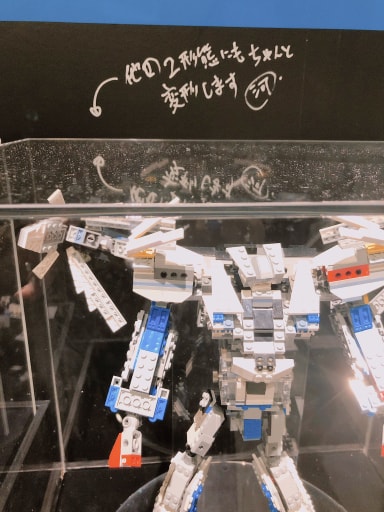
Photo Credit KAWAMORI EXPO Official Twitter Account
Does the prototype help you to conceptualize the transformation?
S. Kawamori: It does help, especially for the toymakers. If you only draw sketches, you can cheat the transformation. When you draw the transformation, the way it moves, you cheat a lot.
Studio Satelight is a studio which employs a lot of foreign animators. How does it feel to work alongside them?
S. Kawamori: It’s great stimulation for me.
Can you talk us about your relationship to Mecha Designer Stanislas Brunet?
S. Kawamori: He’s very good at drawing. Since he also does paper models, we can freely talk about figurines and transformations. It’s easy to talk to him about those topics.
I know you’ve been giving him more and more responsibilities on mecha designs.
S. Kawamori: That’s right. Not only mecha design in his case. In the Macross Frontier movie Sayonara no Tsubasa, he designed the stage and the spaceship in AKB0048.
On the Macross Plus OVA series, you worked alongside Shinichiro Watanabe. Can you tell us about your roles during production?
S. Kawamori: I took care of the story concept, the base for the characters, and story continuity.
After that Watanabe and scriptwriter Nobumoto [Keiko] joined, we discussed and then made the script. We shared the parts for the storyboard, I took care of the main aerial battle scenes, Watanabe of the other ones but of course we still advised each other. I checked angles and layout myself, but I let Watanabe handle details and directions.
Music order was done by both of us, but I had the final decision. I also handled editing and voice recording. That’s for the OVA. Then, for the movie, I managed it myself for the most. I had to adapt and edit the story of the OVA into a film, make the new movie storyboard. Maybe we could say I had more influence on the movie. That’s about it.
Concerning Escaflowne, it’s a pretty interesting work, to my knowledge there were not many other works like that back then. How did you come to the idea behind Escaflowne?
S. Kawamori: For Escaflowne, I wanted to do something different from the usual robot anime. First, I wanted to create something in another setting than space or military ones. There wasn’t many fantasy anime except Aura Battler Dunbine when I started to think about it. I wanted to have a main character who didn’t pilot the robot, so I created Hitomi. With Van, there are two main characters. Then, I wanted the psychic powers in Escaflowne to have the same purpose than the songs during the battles in Macross, that’s why psychic abilities aren’t used to destroy but to feel. So, in that case, I really wanted to do something different than other works.
In the second part of the nineties, we also had much more mecha anime like Evangelion focusing on feelings more than battles. Was it also something you were influenced by, maybe because it was popular at the time?
S. Kawamori: My motto is not to be influenced by others. For Escaflowne, I took 4 or 5 years to make it. During this process, there was also the same kind of ideas coming from other people.
You started working in the animation industry at a young age compared to other people. I was wondering how you came to start so early and if it was difficult for you at that time.
S. Kawamori: The first time I came to know people working in the industry was with studio Nue during my 3rd year of Junior Highschool. I think it’s the experience which changed me the most at that time. The main difficulty I guess was that I was a student at the same time even if I already had several projects. Besides, at an earlier age, I didn’t get proper credit.
On which works didn’t you get credit?
S. Kawamori: I wasn’t credited at the time of Daimos. For the first Macross series, I was credited for the designs but only by my pen name for the supervisor position. I also wasn’t thought as an actual supervisor but only as a setting supervisor. It was a hard time.
How did you come to meet the people from studio Nue?
S. Kawamori: During my 3rd year in Junior Highschool, they broadcasted Uchuu Senkan Yamato (Star Blazers), and I became a huge fan. Then, one of my classmates found out the contact information of Studio Nue to visit them. Without him, we couldn’t have been able to meet.
Who was that classmate? Did he also end up working as an animator?
S. Kawamori: Later he created the Ogawa Modeling company which was behind Gunhed. He was also involved in the preps of the movie Sayonara Jupiter.
Could you tell us about your implication in the last Devil May Cry game? How did you come to work on it, and which designs did you create?
S. Kawamori: The director of Devil May Cry 5, Itsuno Hideaki from Capcom, is a big fan of Macross, so he ordered me to work on some of the transformable hands.
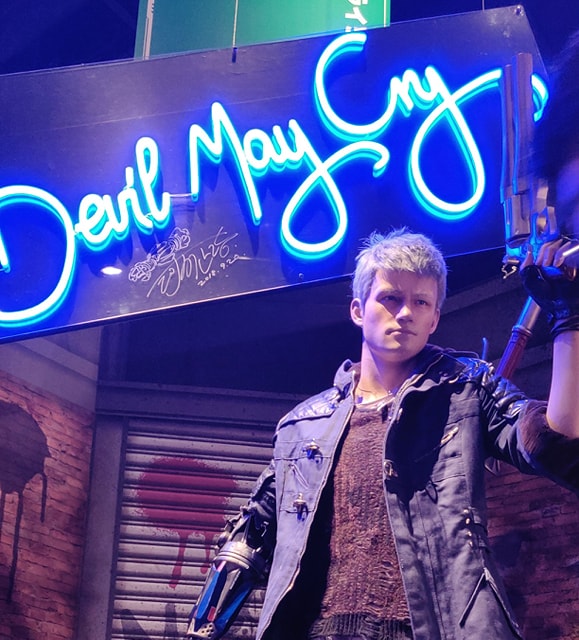
How did you handle it? What were the challenges compared to other designs you made?
S. Kawamori: It’s an action game, and the hand is small, so I try to visualize how to make bigger weapons. But mister Itsuno asked me to make possible transformations, so I came up with multiples ideas.
How many designs did you make?
S. Kawamori: I did eight of them.
About Ulysse 31, that was a co-production between France and Japan. How was it to work with French people back then? How did you come to work with them at that time?
S. Kawamori: At that time they called TMS Entertainment which itself contracted studio Nue on the project. Usually, there was a person to communicate between french and Japanese animators. A toy company was involved too, so it was a bit difficult to balance the various ideas and opinions we had. But I didn’t feel anything special by working with a French company. One particular thing was that because we worked on an anime intended for children, we were asked not to make too sharp parts. I found it interesting because we didn’t have these kinds of orders for the Japanese market.
I know the director of Ulysse 31, Nagahama Tadao, died during the production. Since you weren’t working at TMS, you weren’t directly affected but did it have any effect on the production of the show?
S. Kawamori: My part of the work was already done at that time, but I was also quite surprised when I heard the news. He had done a lot of work for the animation industry.
Yes I know he was considered to be equal to Miyazaki at that time.
In America, they have a modified version of Macross, which is called Robotech. Nowadays, there are a lot of people who are fans of Robotech without knowing that Macross exists. How do you feel about it?
S. Kawamori: I don’t understand, nor do I accept the fact that they took and modified my work without even asking. I can not comprehend how a pirated version like this exists. However, I feel I was very fortunate that many other people from other countries around the world were able to see Macross.
Harmony Gold has a lot of new project around Robotech in America. I think they are working on a new movie, for example, do you take any credits from the American Robotech works?
S. Kawamori: I don’t want to talk about it. Please support the official Macross releases.
Obviously, we would like to take the time to thank Mr. Kawamori for the time he dedicated us, as well as Ms. Fukuyama from Studio Satelight who made this interview possible and took charge of the translation.
Interview by SERAKI Dimitri and BASTIE Arnaud
Translation by Ms. Fukuyama
Proofreading by Jobard Antoine
Like our content? Feel free to support us on Ko-Fi!
You might also be interested in
Oshi no Ko & (Mis)Communication – Short Interview with Aka Akasaka and Mengo Yokoyari
The Oshi no Ko manga, which recently ended its publication, was created through the association of two successful authors, Aka Akasaka, mangaka of the hit love comedy Kaguya-sama: Love Is War, and Mengo Yokoyari, creator of Scum's Wish. During their visit at the...
Ideon is the Ego’s death – Yoshiyuki Tomino Interview [Niigata International Animation Film Festival 2024]
Yoshiyuki Tomino is, without any doubt, one of the most famous and important directors in anime history. Not just one of the creators of Gundam, he is an incredibly prolific creator whose work impacted both robot anime and science-fiction in general. It was during...
“Film festivals are about meetings and discoveries” – Interview with Tarô Maki, Niigata International Animation Film Festival General Producer
As the representative director of planning company Genco, Tarô Maki has been a major figure in the Japanese animation industry for decades. This is due in no part to his role as a producer on some of anime’s greatest successes, notably in the theaters, with films...

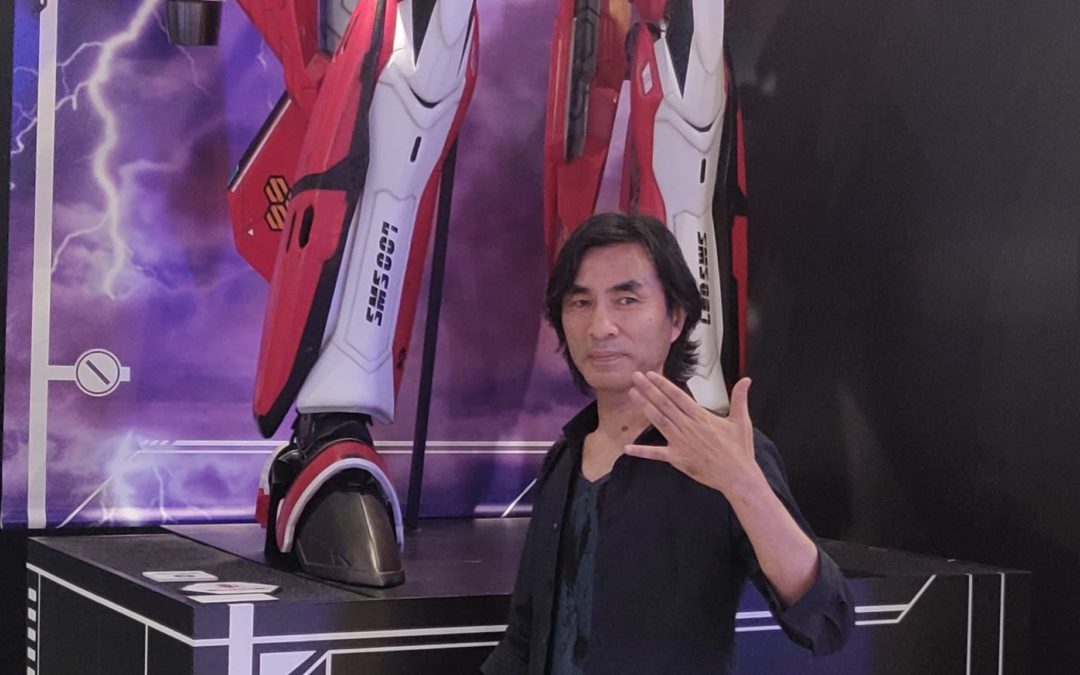
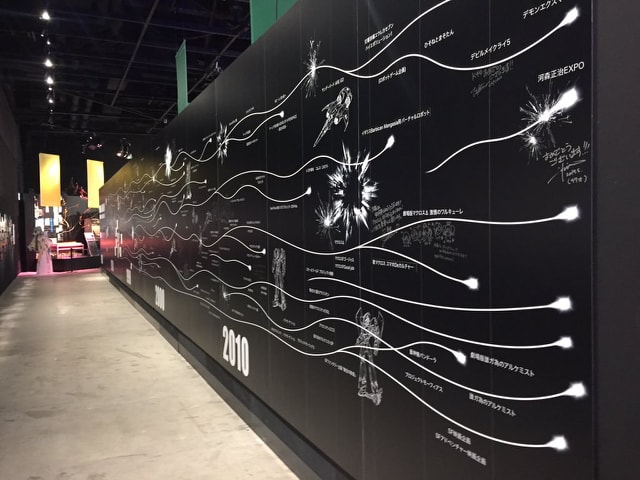
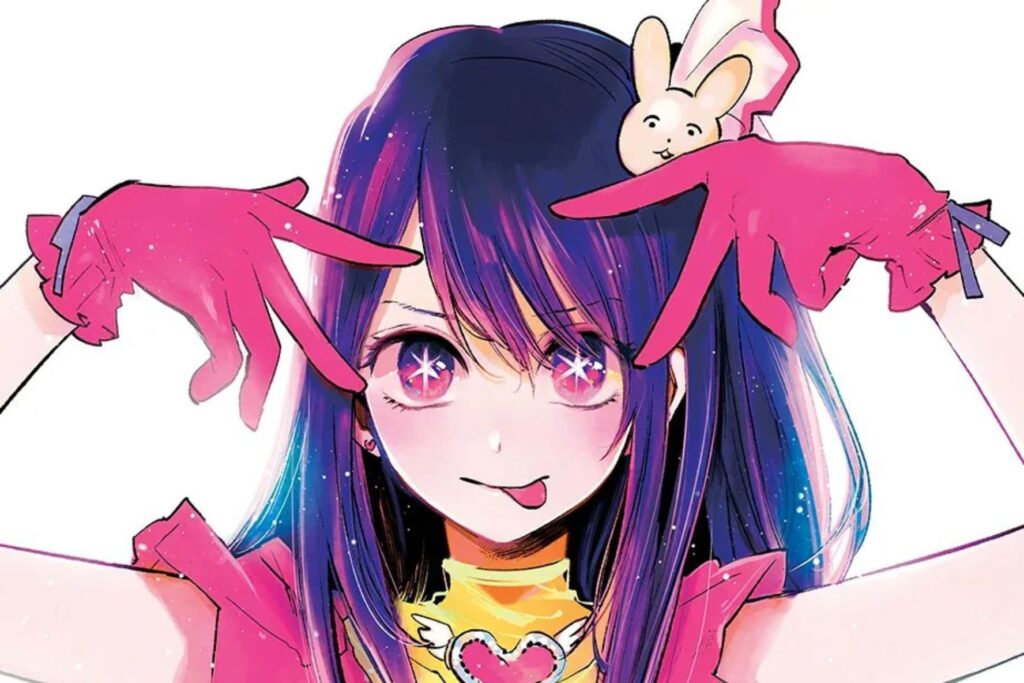
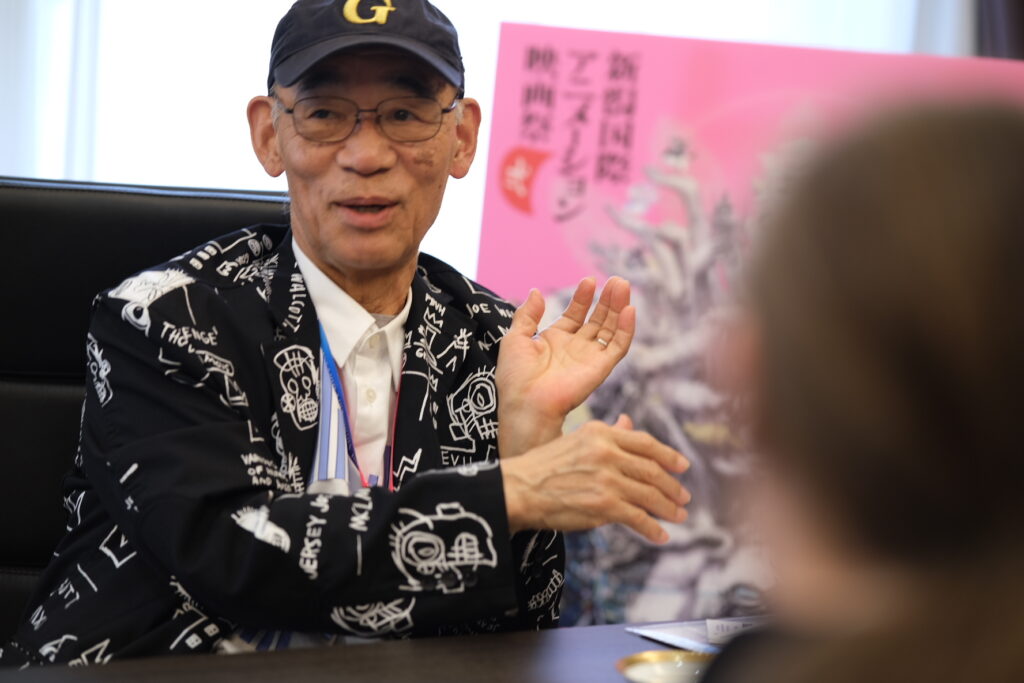
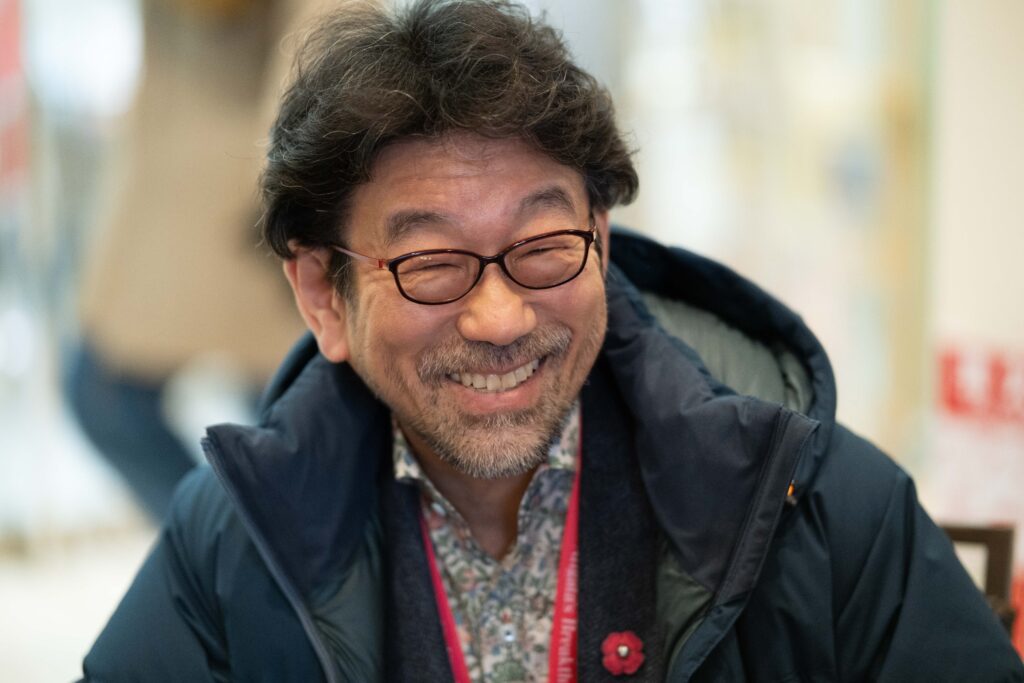
“S. Kawamori: I don’t want to talk about it. Please support the official Macross releases.”
*Also released by HG. >.>b
treiz still up with your lies. Harmony never had any official Macross releases.
Well that’s just wrong. Harmony Gold DID NOT officially release Macross. All they did was fuse the original Macross tv series with Southern Cross and MOSPEADA anime, butchered their stories and rebranded it to Robotech.
It’s wrong, Macross has been published in original version (remasteresed) in japenese (sub english) in USA and other country by HG.
No, that’s niot true. That remastered release was made by HG because HG made his own version of the remastered of Macross. I know that because Big West made his own remastered version. I rode it a many years ago.
No. If Kawamori said, Robotech is a pirated version, that means that HG make a pirated version of Macross called Robotech. So, the official products of Macross are made from Big West. HG just ist allowed to distribute the final product original from Japan
S. Kawamori: I don’t want to talk about it. Please support the official Macross releases.
WE WOULD IF WE COULD GET THEM OUTSIDE OF JAPAN.
You know how hard H.G goes to lock out Macross from being able to be gotten a hold of 🙁
In USA maybe , But not in another countries, like UK
I wonder how HG feels about the disdain Kawamori feels towards them. They own him so much after all.
What Harmony Gold is doing is: Exploiting a license from someone (Tatsunoko) they don’t recognize as people by name, to do nothing with it, other than to keep Macross as a franchise in licensing hell outside Japan (in other words: they hate Macross, and are doing this out of spite). Of course, that’s not how today’s anime is licensed or sold, so clearly what they’re doing is wrong.
Now it might be easy for Kawamori to say “I don’t want to talk about it” , but nothing will change if he doesn’t. You see, people are going to remember you for the things you said and did in your life (that’s why no one likes what Harmony Gold is doing). Once time passes, it’s gone (goodbye 2019, hello 2020). So do something about it now, or don’t, and regret the things you could had said and done. That’s why I Ex-sell69, am doing this for the love of across with an “M”, a lady M.
His answer comes from the fact that the question was asked in a very clumsy way. Since he has never been credited on robotech even though the show is based on his concepts and HG sold toys using his mechadesigns which he did not get any money or recognition for, I understand that he reacted the way he did.
I was actually quite surprised that he was fine with sharing his opinion on Robotech at all.
Y’all know it’s 2019, right? You can easily support Macross simply by importing. I recommend AmiAmi and starting with the BRD releases of the Frontier movies and DYRL… they’re really, really nice products.
Remember a while back, when Harmony Gold was ultra-hyping the fact they were going to be at the same con as Kawamori-san, then they suddenly stopped talking about it? Makes sense now.